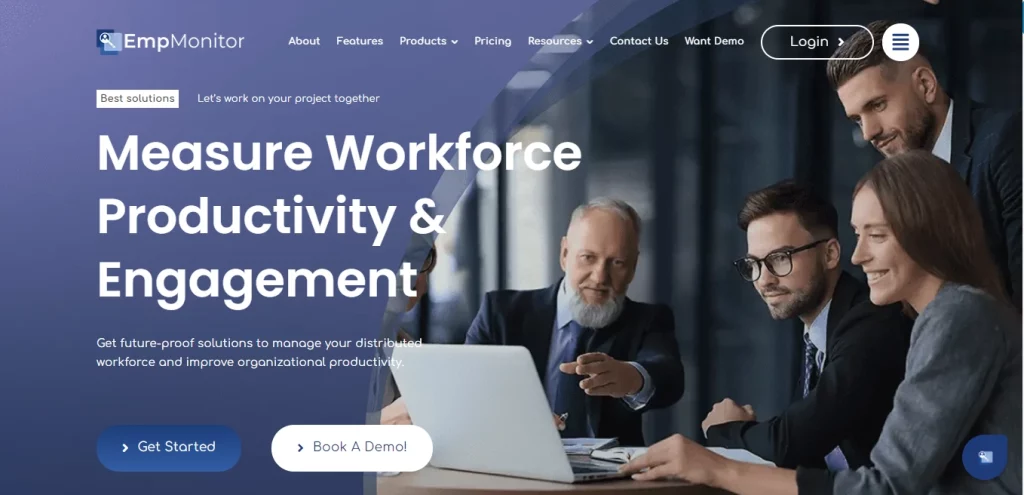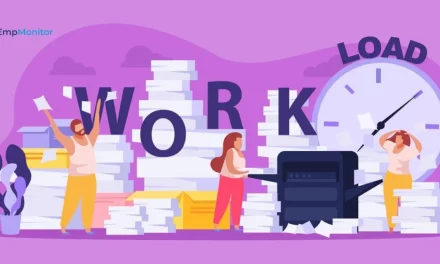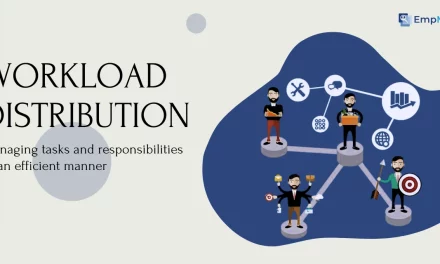Growing employee attrition could be a big problem for organizations that can’t be controlled, even by some of the most successful companies.
In today’s competitive world, many organizations are willing to pay more to their employees, which results in increasing their labor costs. This is particularly evident in the tech industry, where skilled workers are in high demand. As businesses strive to meet these expectations, their profits are reducing, aggravating the increasing attrition rate as a big issue.
Addressing this trend is crucial, as it directly impacts employee retention rates, ultimately affecting the stability and success of businesses across various sectors. Thus, implementing effective strategies to manage employee turnover while balancing employee expectations has become imperative for long-term viability.
If you are also facing high attrition challenges in your industry, going through this blog would really help you.
LISTEN TO THE PODCAST NOW!
What Is Attrition Rate?
The attrition rate represents the proportion of employees who leave a company within a specified period. A higher turnover indicates a lower retention rate, highlighting potential issues with employee turnover.
When employers calculate attrition rates, they want to check the effectiveness of employee retention efforts within a firm. It serves as a key metric for assessing the stability and sustainability of a workforce, guiding strategic decisions aimed at improving employee retention, and fostering a positive work environment.
To solve this problem, organizations can rely on Workforce Management Solutions like EmpMonitor. This tool allows employers to have a keen eye on what their employees are doing and know about their work performance. Accordingly, they can manage appropriate schedules to manage the work engagement of their employees.
Try Now
Types Of Attrition
Basically, four types of attrition may happen because of different reasons. Here are they:-
Voluntary Attrition
Voluntary attrition occurs when employees leave a company of their own volition, whether due to retirement or resignation. Factors contributing to this phenomenon include an aging workforce, limited growth opportunities, toxic work cultures, and burnout.
For companies, a high rate of voluntary attrition poses significant challenges. Not only does it indicate potential internal issues, but it also hampers the ability to attract and retain skilled talent. Prospective candidates may be reluctant to join a company with a history of frequent departures among its employees.
Addressing the root causes of voluntary attrition is essential to fostering a supportive work environment and enhancing employee satisfaction and retention.
Involuntary Attrition
Involuntary attrition occurs when businesses terminate employment, typically associated with short-term roles. This may happen when a company reorganizes its staff, downsizes, or hires employees for a limited time.
This situation presents challenges for both employers and employees, requiring careful management to maintain morale and productivity.
Effective communication and support mechanisms are essential during such transitions to minimize uncertainty and financial strain on affected individuals.
External Attrition
External attrition occurs when employees depart from a company to pursue better opportunities elsewhere. It happens when individuals seek improved work environments, higher salaries, and greater growth prospects.
Such departures pose challenges for organizations, highlighting the importance of offering competitive benefits, fostering a positive workplace culture, and providing opportunities for career advancement to retain talent effectively.
Internal Attrition
Internal attrition occurs when employees within a company are promoted or shift departments to take on new roles. While such transitions can signify growth and development, they may also present initial challenges as individuals adapt to new responsibilities or environments.
Internal attrition reflects organizational dynamism and the pursuit of career advancement opportunities within the company, contributing to workforce development and retention strategies.
The types of attrition mentioned above can contribute to lower employee retention in your workplace. To address these challenges effectively, organizations can leverage workforce planning tools to optimize workforce management. Implementing such tools enables organizations to identify the root causes of employee attrition, empowering them to implement preventive measures proactively. This strategic approach not only enhances operational efficiency but also supports long-term talent retention objectives.
Also Read
06 Best Ways to Improve Employee Retention
How To Reduce Employee Attrition Rate: 9 Best Ways
Before aiming to decrease employee attrition, it’s essential to calculate your firm’s attrition rate. That provides a clear picture of the problem’s scope and accordingly, you can take effective actions.
To tackle such employee turnover effectively, prioritize hiring employees who are highly skilled in their work and try to retain them. Yet, if retaining such employees remains an issue, consider the following strategies to address it.
Recruit Right People
Finding the right individuals whose skills and values match your company’s needs is one of the biggest challenges for every organization. However, it can help you to overcome the attrition rate at some level.
Especially when employees are well-suited to their roles and feel connected to the organization, they’re less likely to leave. This reduces turnover and creates a more stable workforce. If you focus on hiring candidates who fit well culturally and professionally, you can decrease employee turnover and build a team that stays committed for the long term.
Offer Competitive Compensation
When employees feel adequately rewarded for their contributions, they’re more inclined to stay. A software company increased salaries to match industry standards, resulting in a significant decrease in attrition rate. Competitive compensation not only attracts top talent but also retains experienced staff, ultimately lowering turnover and maintaining workforce stability.
Conduct Employee Survey
Through surveys, companies can uncover valuable insights into their workforce, ultimately aiding in attrition rate reduction. For instance, surveys help identify employees with leadership potential, who can then be groomed for higher roles.
Customized questionnaires enable organizations to delve into specific areas of concern and gather feedback on various aspects of job satisfaction.
This includes rating job-related factors, determining the Employee Net Promoter Score (eNPS), understanding satisfaction trends, and comparing perceptions with other industry employers. By leveraging survey data effectively, companies can proactively address issues, enhance employee engagement, and ultimately reduce attrition rates.
Utilize Employee Monitoring
Implementing workforce monitoring can help employers achieve greater work transparency, allowing them to pinpoint toxic behaviors that negatively impact the workplace environment.
Monitoring tools help identify employees who consistently display negative attitudes or engage in disruptive behavior, enabling managers to intervene early and address issues promptly.
Moreover, analyzing data from employee monitoring can provide insights into the underlying causes of turnover, facilitating targeted interventions to improve retention. Additionally, monitoring software enables the creation and enforcement of company policies through automated alerts, helping to maintain adherence to organizational standards.
Let’s take an example of an exceptional employee monitoring and workforce planning software- EmpMonitor offers workforce management features that let you keep a close eye on your employees. It has project management features allow you to track tasks and projects while maintaining transparency. Moreover, it has an alert-based mechanism that allows you to ensure compliance with company policies, ultimately contributing to lower employee turnover rates.
EmpMonitor- The Best Workforce Management Software
EmpMonitor is a one-stop workforce management solution for all your business requirements. This tool not only helps you to monitor employees’ work time and attendance but also keeps track of their work record getting you detailed reports.
Here are some of the best features of EmpMonitor:
- User Activity Monitoring: EmpMonitor provides real-time insights into employees’ work activities with its user activity monitoring, allowing employers to track their online behavior and productivity levels.
- Time Tracking: With its time tracking functionality, EmpMonitor enables accurate recording of employee work hours, facilitating efficient payroll processing and resource allocation.
- Attendance Monitoring: EmpMonitor simplifies attendance tracking by offering automated attendance monitoring tools, reducing manual workload, and minimizing errors.
- Productivity Monitoring: It offers detailed productivity reports and analytics, empowering employers to identify trends, patterns, and areas for improvement in employee productivity.
- Project Management: EmpMonitor facilitates effective project management by providing tools for task allocation, progress tracking, and collaboration, ensuring projects are completed on time and within budget.
Offer a Flexible Work Culture
Providing flexibility in work schedules, like offering hybrid and remote work options, is a powerful tool for reducing attrition rates. When employees can work from home, they often feel more satisfied with their jobs and can better manage their work-life balance. This leads to fewer resignations and a more stable workforce overall. By accommodating such flexibility, companies show they value their employees’ needs, which helps retain talent and strengthens the organization.
Growth Opportunities
Employees are more likely to stay when they see possibilities for advancement within the organization. Promoting from within or providing training for new skills can motivate staff to remain loyal. By investing in employee development, companies not only improve retention but also foster a culture of continuous learning and progression, ultimately leading to lower attrition rates.
Improve Workplace Communication
Clear and open communication fosters trust and transparency, addressing concerns before they escalate and prompting employees to feel valued and engaged. For instance, regular team meetings allow employees to voice their opinions and address any issues, preventing misunderstandings and dissatisfaction that could lead to turnover. Effective communication channels create a supportive environment, ultimately decreasing attrition rates within the organization.
Focus On Employee Engagement
When employees feel valued and involved, they’re more likely to remain committed to their roles and the organization. It creates a positive work environment and encourages people to speak about their issues to each other and solve them together.
Having good employee engagement fosters higher job satisfaction, leading to lower attrition rates. By prioritizing employee engagement initiatives, organizations can create a culture where employees are motivated to remain committed to their roles and the company’s success.
Analyze Existing Turnover Issues
By identifying the root causes behind why employees are leaving, such as poor management, lack of career growth, or low job satisfaction, you can implement targeted solutions.
If high attrition rates are linked to inadequate training programs, investing in employee development can improve retention. Understanding these factors enables proactive measures to address them effectively, ultimately reducing attrition and fostering a more stable workforce.
Wrapping Words
Minimizing attrition rates demands a strategic approach from organizations. Through thorough analysis of turnover issues and proactive resolution of underlying causes, companies can enact tailored strategies to enhance retention.
It’s important to acknowledge that entirely eradicating attrition challenges may not be feasible. However, by implementing the aforementioned methods, organizations can significantly mitigate attrition’s impact.
Ultimately, fostering a positive workplace culture and conducive environment is important. Prioritizing these aspects cultivates employee loyalty and satisfaction, facilitating the retention of top talent. Striving towards creating an environment where employees feel valued and supported is key to long-term retention success.
















